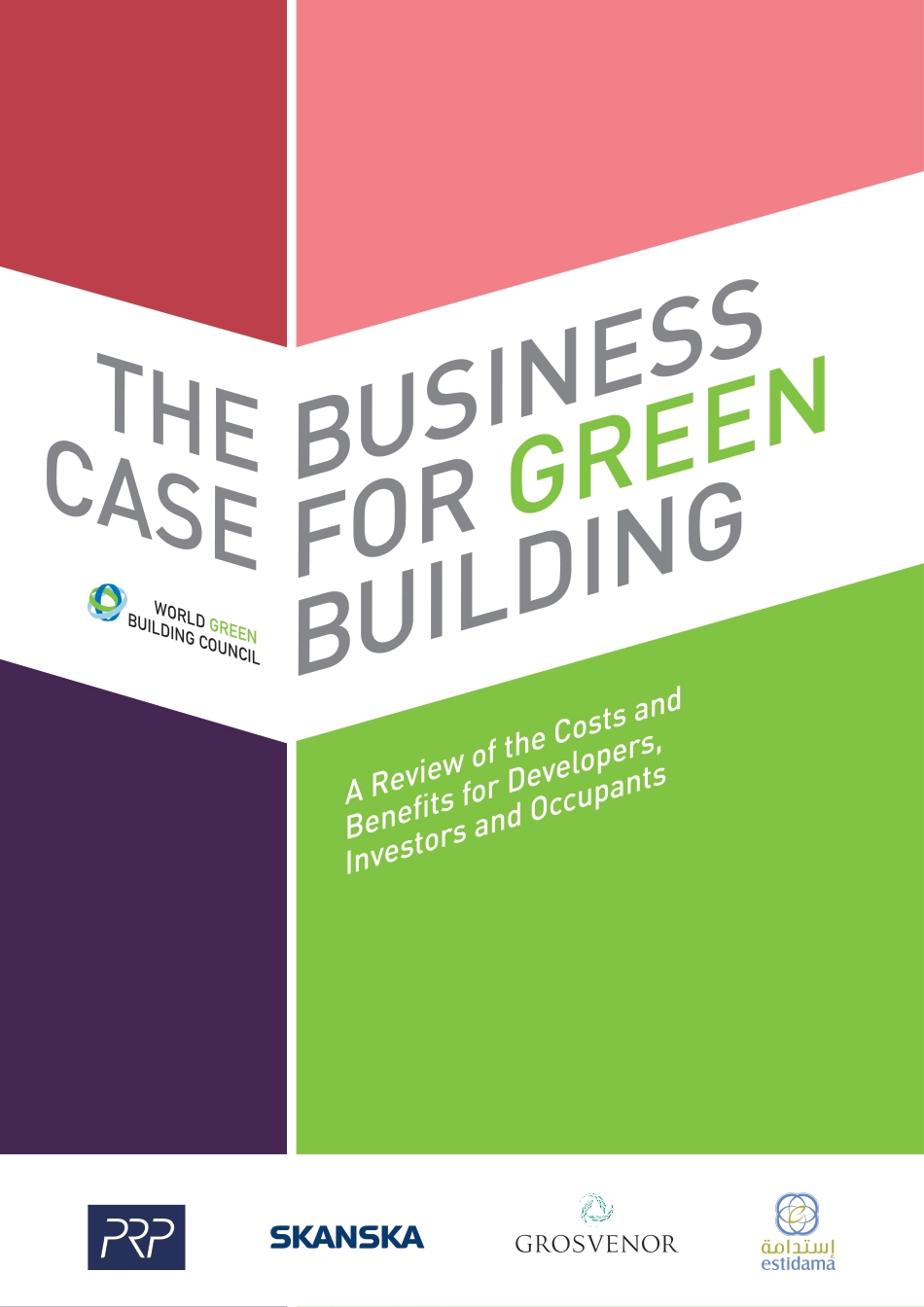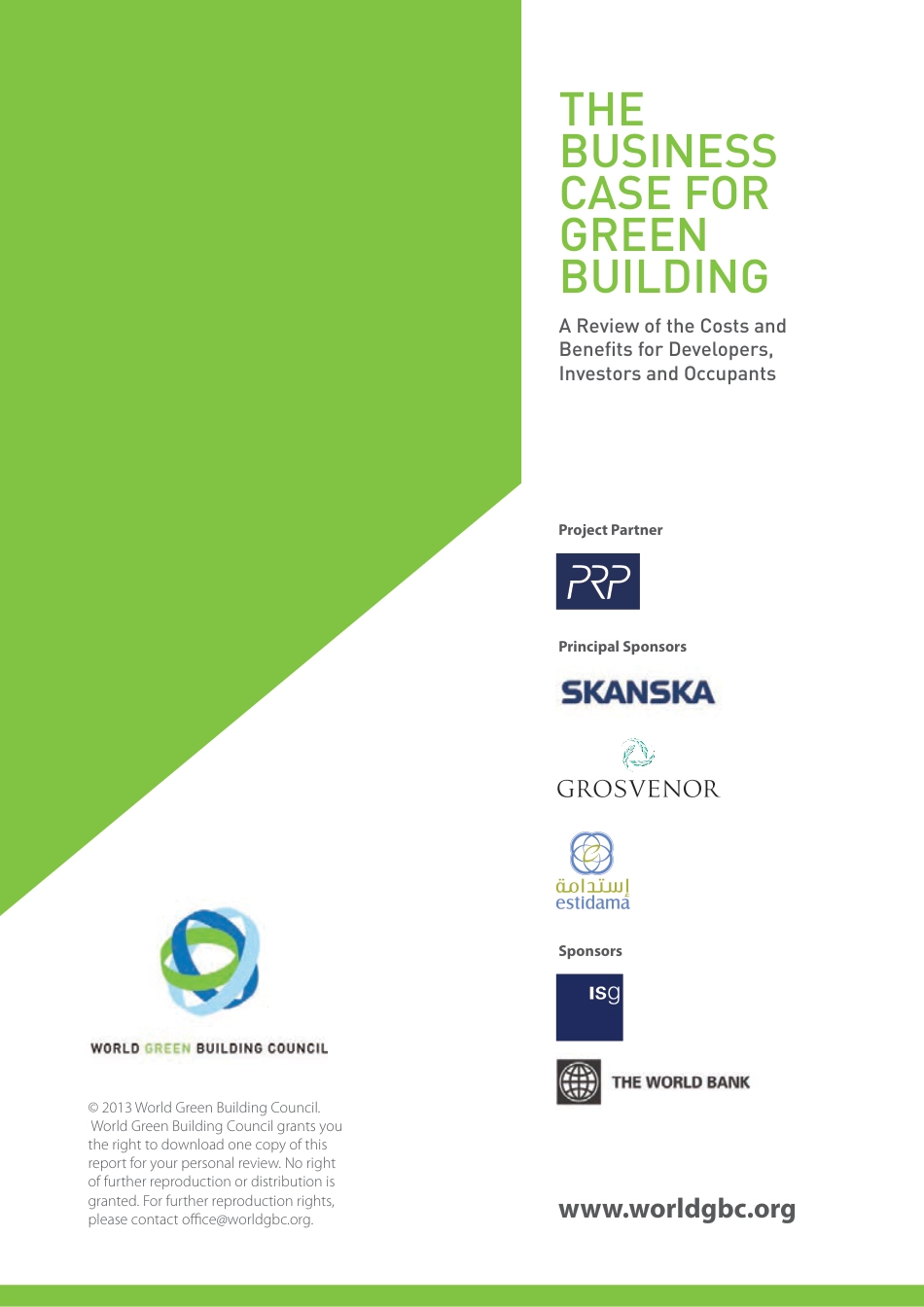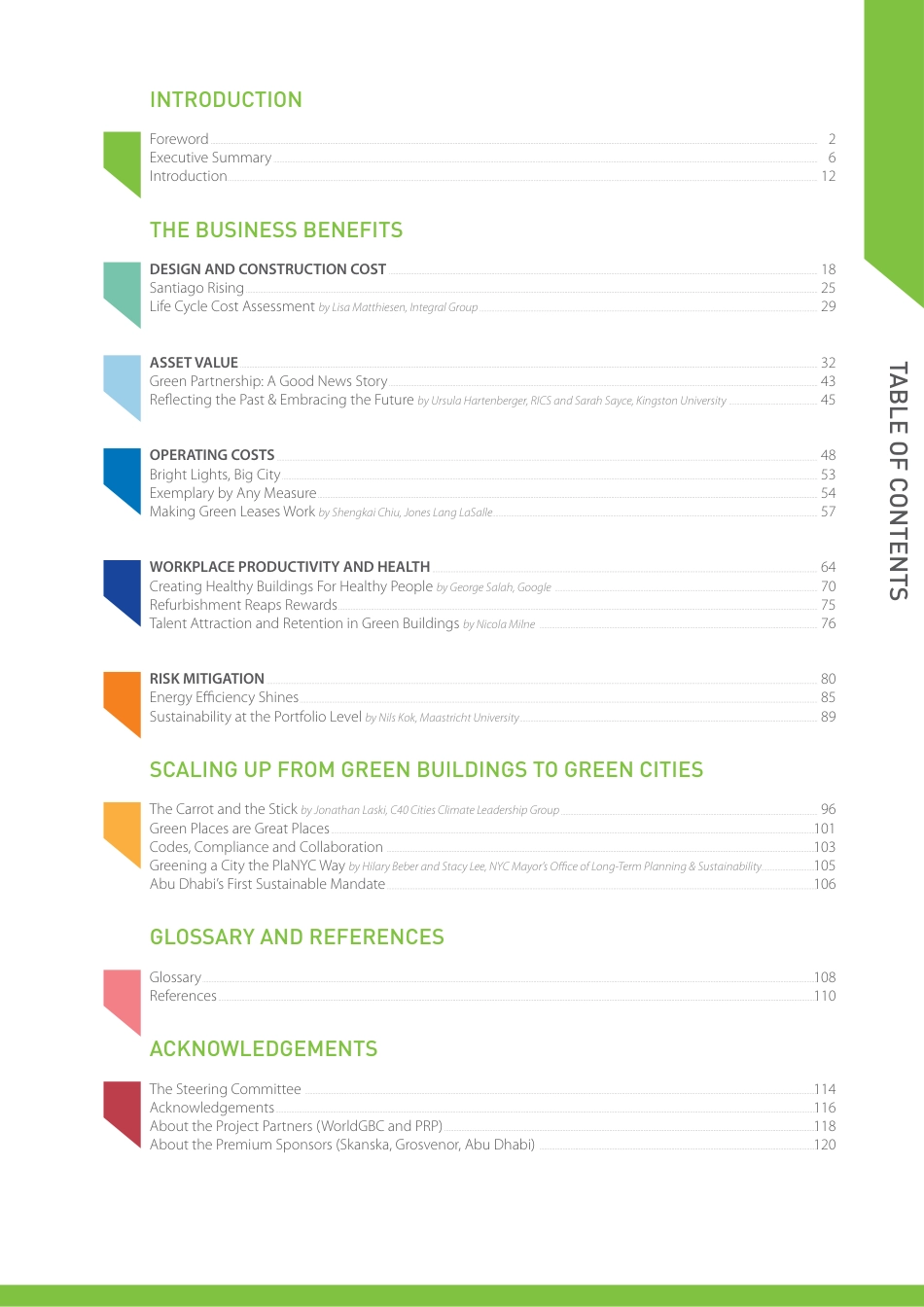THE BUSINESS CASE FOR GREEN BUILDINGwww.worldgbc.orgA Review of the Costs andBenefits for Developers,Investors and Occupants© 2013 World Green Building Council. World Green Building Council grants you the right to download one copy of this report for your personal review. No right of further reproduction or distribution is granted. For further reproduction rights, please contact office@worldgbc.org.Project PartnerPrincipal SponsorsSponsorsForeword 2Executive Summary 6Introduction 12THE BUSINESS BENEFITS DESIGN AND CONSTRUCTION COST 18Santiago Rising 25Life Cycle Cost Assessment by Lisa Matthiesen, Integral Group 29ASSET VALUE 32Green Partnership: A Good News Story 43Reflecting the Past & Embracing the Future by Ursula Hartenberger, RICS and Sarah Sayce, Kingston University 45OPERATING COSTS 48Bright Lights, Big City 53Exemplary by Any Measure 54Making Green Leases Work by Shengkai Chiu, Jones Lang LaSalle 57WORKPLACE PRODUCTIVITY AND HEALTH 64Creating Healthy Buildings For Healthy People by George Salah, Google 70 Refurbishment Reaps Rewards 75Talent Attraction and Retention in Green Buildings by Nicola Milne 76RISK MITIGATION 80Energy Efficiency Shines 85Sustainability at the Portfolio Level by Nils Kok, Maastricht University 89 SCALING UP FROM GREEN BUILDINGS TO GREEN CITIES The Carrot and the Stick by Jonathan Laski, C40 Cities Climate Leadership Group 96Green Places are Great Places 101Codes, Compliance and Collaboration 103Greening a City the PlaNYC Way by Hilary Beber and Stacy Lee, NYC Mayor’s Office of Long-Term Planning & Sustainability 105Abu Dhabi’s First Sustainable Mandate 106GLOSSARY AND REFERENCESGlossary 108References 110ACKNOWLEDGEMENTSThe Steering Committee 114Acknowledgements 116About the Project Partners (WorldG...



